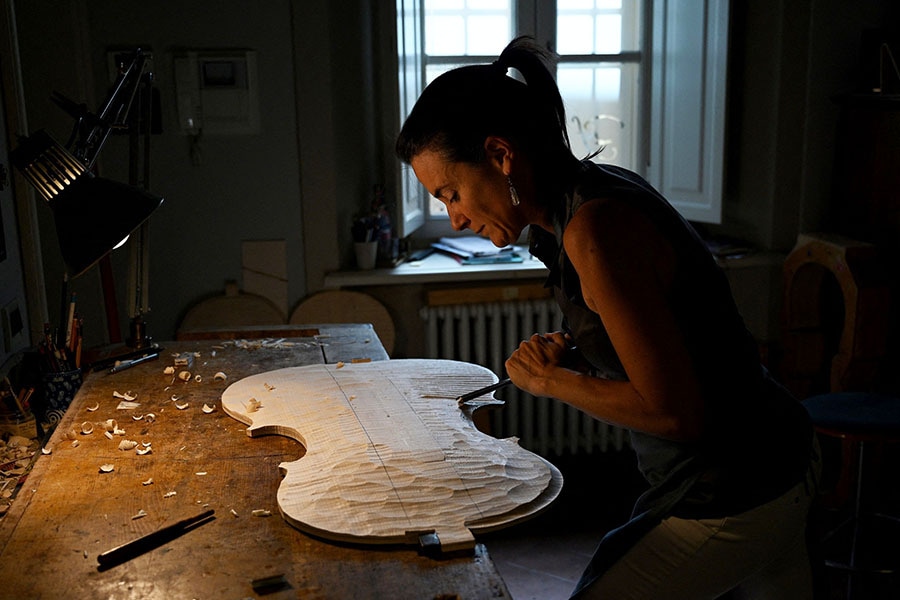
Violins in the Sun: Stradivari's home workshop reopens in Italy
Budding luthiers and young musicians can now get a step closer to master Antonio Stradivari by honing their skills in his original house and workshop
 French violin maker Benedicte Friedmann works on the body of a violin in her Cremona workshop.
Image: Gabriel Bouys / AFP
French violin maker Benedicte Friedmann works on the body of a violin in her Cremona workshop.
Image: Gabriel Bouys / AFP
For over three centuries, music lovers the world over have been trying to unlock the secrets of Antonio Stradivari's prized string instruments.
Budding luthiers and young musicians can now get a step closer to the master by honing their skills in his original house and workshop, which have been transformed into a centre of learning and a musical pilgrimage site in northern Italy.
"The Stradivarius myth was born between these walls, and it was here that (Stradivari's) vision of the violin's perfect resonance began to germinate", said violinist Fabrizio von Arx, who set up the foundation which restored the house in Cremona.
"It's magic, I feel the vibrations", the 47-year-old Italian-Swiss violinist told AFP as he walked around the medieval building, home to the famous luthier, whose instruments took the Latin form of his name, Stradivarius, between 1667 and 1680.
The centre opened to visitors this week.







